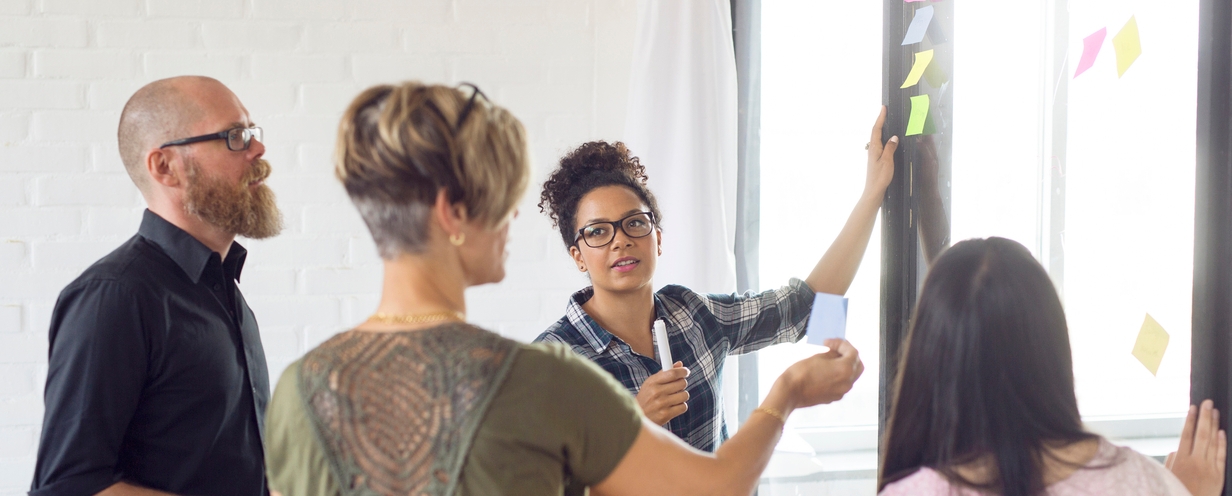
Why human-centered design is your core product strategy

Design is no longer just about aesthetics, it’s a strategic differentiator. User experience (UX) design has evolved from a visual add-on to a business-critical function where customer retention hinges on a good (or bad) UX moment.
Today, when switching costs are low and user expectations are sky-high, companies that treat design as core to their product strategy are consistently outperforming their peers.
An effective UX design isn’t just about creating better-looking products, it’s about making smarter decisions, creating faster product iterations, and fostering stronger customer relationships.
By prioritizing human-centered design and early collaboration, forward-thinking UX teams are turning design into a customer retention machine.
Let’s break down why putting UX design at the heart of your product strategy isn’t just smart, it’s essential for long-term business success.
What is human-centered design?
"Human-centered design," often shortened to HCD, is an approach to problem-solving and design that quite simply, puts people at the very heart of the process.
Instead of starting with technology, business goals, or assumptions, HCD begins by deeply understanding the needs, desires, behaviors, and contexts of the actual people who will use a product, service, or system.
The ROI of human, design-led thinking
According to McKinsey’s The Business Value of Design report, companies in the top quartile of their Design Index saw 32% higher revenue growth and 56% greater total returns to shareholders over five years compared to industry averages.
High-performing companies treat human-led UX as a strategic discipline, not an executional afterthought. They embed designers early, validate with real users through usability testing, and use design metrics alongside business KPIs.
Relying on both moderated and unmoderated tests, live video feedback, and real-time customer insights that go beyond traditional data dashboards, leading UX teams are able to incorporate real human feedback into their UX design process.
Instead of working from assumptions, they establish a continuous loop of feedback, ensuring every iteration is grounded in real human behavior.
This approach leads to faster product-market fit, fewer costly pivots, and experiences that convert and retain users more effectively. Design is no longer just about how it looks—it’s how it works, how it feels, and how it performs for the business.
GUIDE
How to enhance design efficiency through continuous user feedback
Design as a cross-functional unifier
Without strong UX leadership, teams fall into silos. Engineering might chase technical feasibility, product managers focus on timelines, and marketers optimize for acquisition—all without a shared view of what users actually need.
That’s where UX design becomes the glue.
Prototypes, journey maps, and research reports anchor conversations in user behavior rather than opinion. They drive alignment across disciplines and ensure that the voice of the customer is present from the first brainstorm to the final build.
Design-led teams collaborate earlier and iterate faster. By surfacing friction points early through usability testing, they reduce subjective debates and shorten feedback loops. This builds momentum instead of roadblocks.
Design maturity reduces costly rework
Rework is a silent killer of productivity. Late-stage design changes lead to bloated sprints, burned-out teams, and delayed launches. The antidote? Design maturity.
Organizations with mature UX practices have systems in place to validate early and often. They maintain reusable research, validated component libraries, and established testing protocols that reduce guesswork.
Instead of designing in isolation, they test with real users early—before code is committed. This saves time, protects morale, and improves the quality of what gets shipped.
They also adopt scalable design systems that promote consistency across teams and products. These systems allow designers and developers to work faster with fewer redundancies, while ensuring a unified user experience.
In short, investing in design maturity is like investing in product insurance. It protects your roadmap from costly surprises.
Design leadership builds long-term customer value
Design-led companies aren’t just focused on getting users in the door—they’re focused on keeping them. Exceptional UX builds trust, accessibility, ease of use, and emotional connection—the very things that impact retention and customer lifetime value (CLV).
When UX leadership is present at the top, organizations create products that feel intuitive, not just functional. They think beyond features to focus on holistic experiences—how a product fits into a customer’s life, how it reduces effort, and how it delivers joy.
The result? Loyal users, stronger word-of-mouth, and a brand that stands for something meaningful.
Human-first UX is not optional
The most successful companies today don’t guess, they test. With human-centered UX design as a business priority, leading brands make sure they align their designs with customer expectations, allowing them to solve their problems with confidence.
UX design isn’t a checkbox at the end of the sprint, it’s a strategic pillar that drives long-term growth, customer loyalty, and business innovation.
ON-DEMAND WEBINAR





